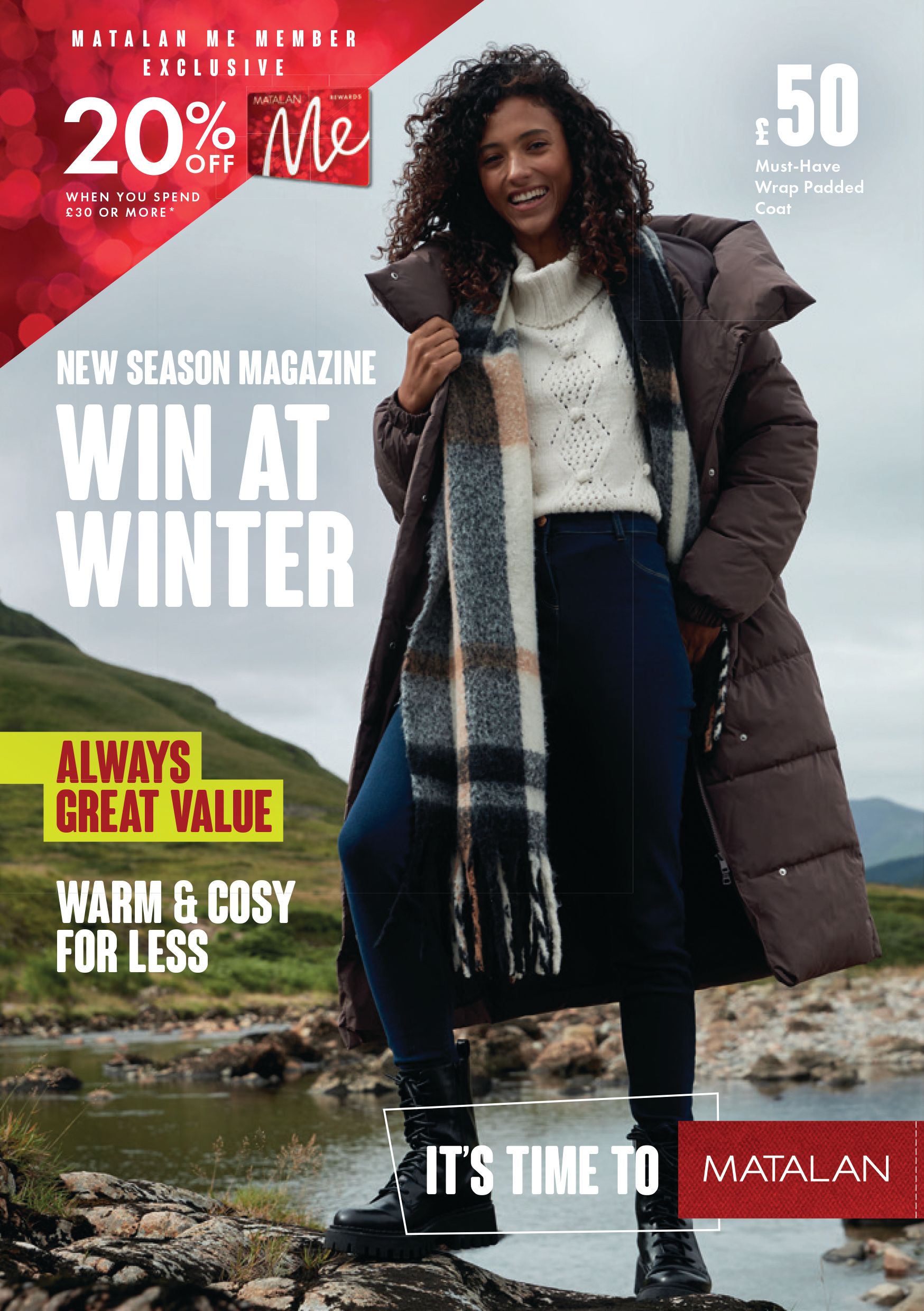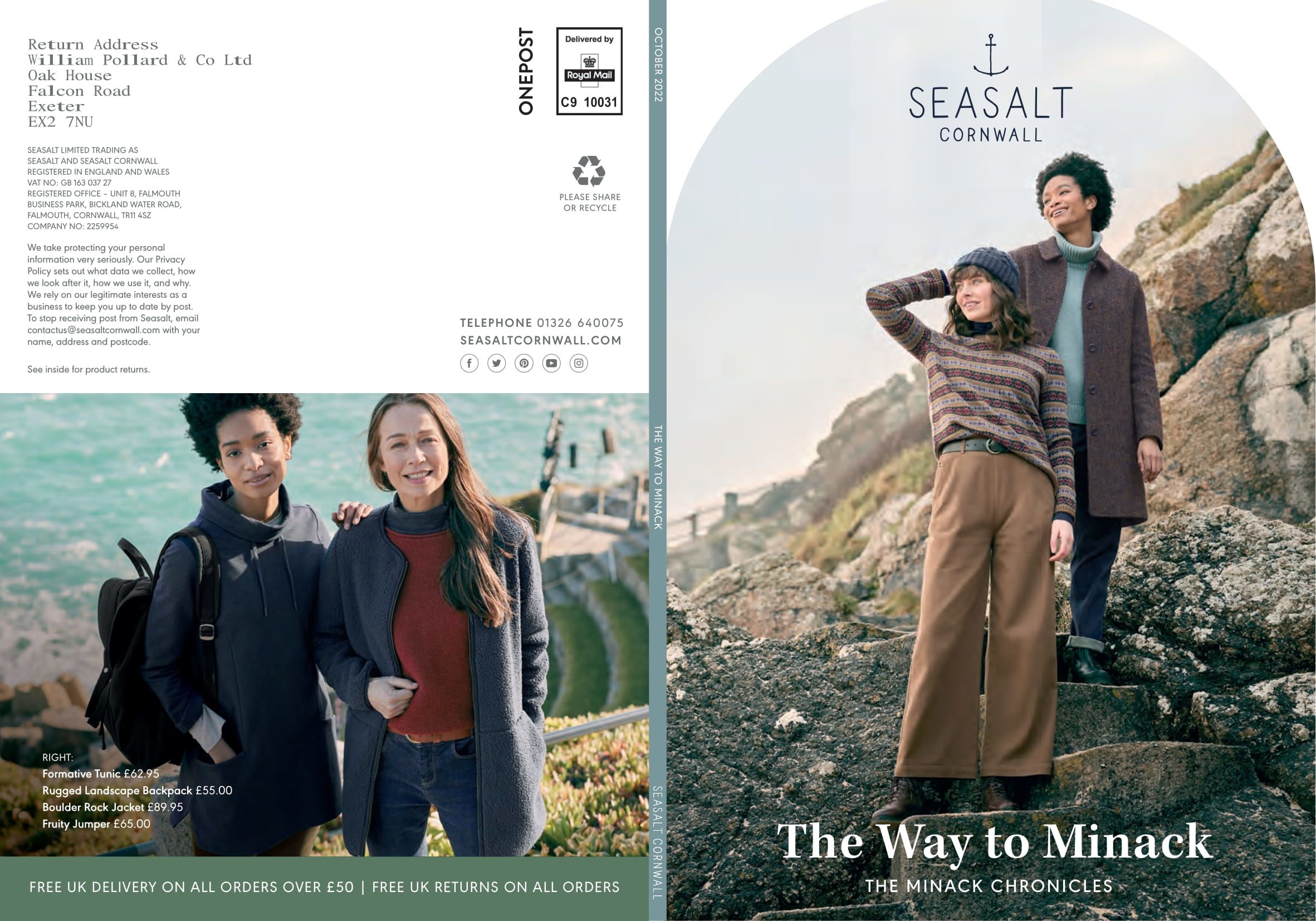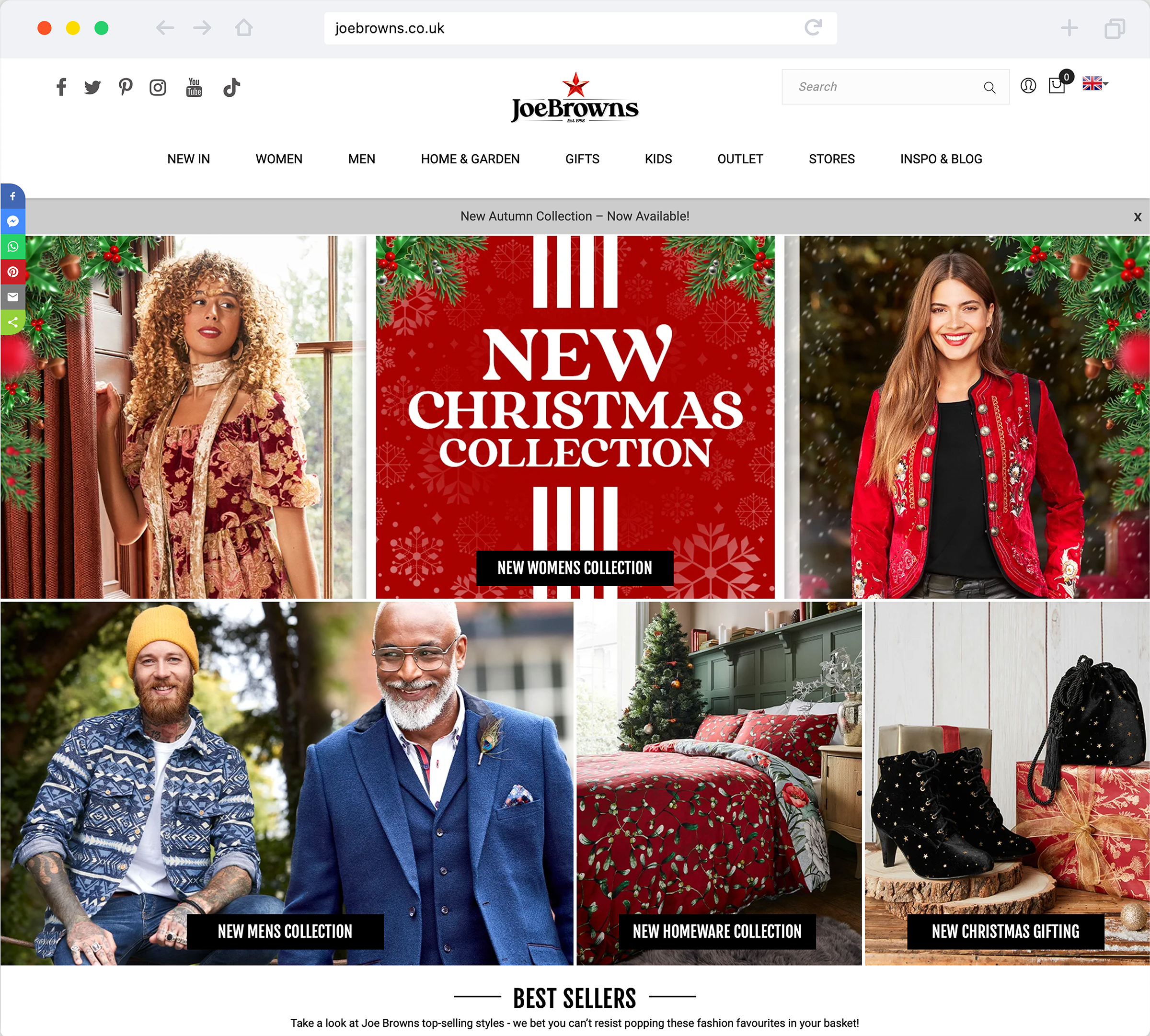Category insight: Fashion
Fashion catalogues work well the research found. Retailers can drive consumer engagement and sales by providing inspiration and introduce new brands with eye-catching covers.
Offers are important in this category – potentially even more so in the challenging economic circumstances the UK faces – and retailers such as Matalan understand the value of prominently promoting discounts and its loyalty scheme.
Catalogues that include editorial supporting brand stories are impactful for target customers. Retailers such as Sosandar see the value in catalogues, with glossy, A5 size, publications of 75-pages showcasing its latest looks, and style advice.
Catalogues of fewer than 50 pages are the most common, with one in four including a discount code. ABC1 women over 35 are the most likely to receive fashion catalogues, and 39% of fashion catalogues come from brands the consumer already buys from.
Eighty-three per cent of fashion catalogues are looked at immediately or kept to look at another time, while two-thirds of fashion catalogues stay in the home for at least a week. They are looked at for 11 minutes on average and 23% of fashion catalogues lead to a purchase.



Still big in fashion
The catalogue, now often mixing classic catalogue design with a magazine, is still a powerful sales driver in fashion; one of the medium’s heartlands.
Seasalt: showcasing new collections
Seasalt sends catalogues to customers to showcase new collections and stories, and postcards and smaller mail for special events or occasions. Seasalt senior customer relationship manager Miranda Hammond says: “Not everyone is digitally engaged so the catalogue is an important part of the marketing mix to help us reach customers in ways they prefer. Catalogues tend to have a longer impact than digital marketing and are kept in the customer’s home for longer so usually deliver on the investment. They also make it easy to track performance and understand what’s working and what’s not.”
She adds that innovation is important. “We use the catalogue to showcase brand stories and partnerships, whether that’s modern creatives who inspire us or stories about our suppliers or fabrics. We’ve added QR codes to make it easier for customers to go direct to digital content to find out more.”
Joe Browns: supersizing exposure
Fashion and homewares retailer Joe Browns has big plans, aiming to reach £100m revenue by 2026, up from £39.1m in its financial accounts to June 30, 2021.
It started as a catalogue business and this remains the core driver of sales now it has become a multichannel business.
In autumn/winter 2021, it expanded its homewares range and felt it was a powerful hook to attract new customers to the brand. The aim of the autumn/winter 2021 catalogue campaign was to reach new and current audiences by communicating the new range without cannibalising the season’s fashion launch.
Previously, Joe Browns had mailed catalogues that weighed less to keep within that postage price band, but for this launch it tested a catalogue with 24 extra pages. The heavier 148-page catalogue displayed all the usual fashion elements but gave maximum exposure to the new homewares range. Overall response rates were up by 32%* compared to autumn/winter 2019, according to the retailer. Responses from new customers were higher than the best-performing lists of spring/summer 2021, while average order values increased on 2020 levels.
The White Company: a 360 experience
For The White Company, catalogues and brochures have always been a critical part of its marketing strategy, something chief creative officer Mark Winstanley says is part of its heritage. “To this day these still make up a significant proportion of our communication and marketing mix and prove to be especially popular with our long-standing customers.”
He adds that rising interest in shopping online has not negatively impacted the medium. “The rise in online shopping and digital channels has certainly impacted the role of brochures but not necessarily in the way that many would think.
“The role of the brochure has evolved from being our primary sales channel to a tool that we can use alongside our beautiful stores, social media, email and website to create a 360-degree shopping experience for our customers.”
1 https://www.marketreach.co.uk/case-study/joe-browns
